
by California Casualty | Educators |
The typical college dorm room is pretty small. That makes it easy to keep clean, right? Not necessarily. With studying, classes, socializing, etc., it’s easy to neglect a room and let the mess pile up.
Since a clean room is easier to study (and live) in, you’ll want your college-bound child to know the right steps to keep it that way. Here are 6 tips to help them keep their dorm room looking its best all semester long.

Tip #1: Stock up on the right cleaning supplies
Whether you choose to clean before piling in the furniture of their new dorm, or not, a trip to the store for basic cleaning supplies on moving day is inevitable. They’ll need dishwashing liquid, a small tub, and a scrubber for dishes. Sponges, cleaning wipes, paper towels, a glass cleaner, and a general cleaner or disinfectant spray for wiping down surfaces. And for the floors, they’ll want a broom, dustpan, microfiber mop, and if you have carpet, a vacuum.
Money-saving solutions:
-
- Coffee filters work well as lint-free cloths for dusting.
- You can make your own cleaning solution of baking soda and vinegar. Mix one-part baking soda to two-parts vinegar (e.g. ¼ cup baking soda and ½ cup vinegar). Pour the mixture into a spray bottle.

Tip #2: Make room for storage
Having a place for everything, and making sure to return everything to its place, will help them keep things tidy. Before they head off to school, make sure your child has furniture that has enough storage for all of their things, or furniture/décor that can dual as storage. A cube organizer can easily become a place where towels and toiletries are kept, videos games and electronics can be placed in tubs, a desktop organizer can be used for papers and books, etc.
Money-saving solution:
-
- College kids these days have more items worth more money than ever before. Protect those items through renter’s insurance. Surprisingly it’s very affordable; it even costs less than textbooks!

Tip #3: Keep the air fresh and clean
Odors can easily overwhelm a dorm room because it’s such a small space. So, you should also stock up on freshening or purifying products and scented trash can liners before move-in day. Make sure they know to remove trash and food before it spoils. And if you do notice a smell, try to identify its source—or call maintenance.
Money-saving solution:
-
- Put a container of baking soda out to absorb odors.

Tip #4: Make cleaning fun
We all know cleaning can be quite a chore, but now’s the time to change that mindset. Pass on these helpful cleaning tips to encourage your college student that cleaning doesn’t have to be boring. 1. Transform cleaning into a fun activity. 2. Play your favorite music or listen to a podcast. 3. Set a timer and see how much you can do. 4. Cleaning can be a workout, and you can track the calories that you burn. 5. Clean with your roommate for double the fun—and results. Before they know it, cleaning will become a habit!
Time-saving solution:
-
- Clean and listen to a recording of a class lecture to kill two birds with one stone.

Tip #5: Negotiate with a messy roommate
Roommates could make or break your child’s college experience. And roommates may not be on the same page about cleaning. Encourage your child to talk to his/her roommate about some basic tasks, such as picking up clothes or taking out the trash. And even ask him/her to join in the cleaning fun, with music on a designated day.
Roommate solution:
-
- Make a roommate contract when you move in together to set expectations about cleanliness, guests, etc.

Tip #6: Schedule time for cleaning
This is the most important part. If they remember anything, tell them to remember this. Schedule cleaning into their daily routine just as they do studying and classes. Just 15 minutes at the end of each day will make a big difference. Then, schedule time on the weekend to clean. Do a deeper clean once a month. Have them use the following list or put together their own list of cleaning hacks.
Cleaning schedule breakdown:
Daily cleaning
-
- Make your bed.
- Wash your dishes.
- Tidy up. Put everything in its place.
- Disinfect frequently touched surfaces such as doorknobs and light switches.
- Check to see if the trash needs to be taken out.
Weekly cleaning
-
- Do your laundry, including your bedding and towels.
- Clean out your fridge of old food.
- Wipe down the inside of the microwave.
- Dust with a damp cloth or microfiber duster. Dust is especially attracted to electronics, computers, speakers, and televisions.
- Sweep and mop or vacuum.
- Clean the bathroom if you have one in your room.
Monthly cleaning
-
- Clean the windows and mirrors.
- Wipe down appliances.
- Clean inside the refrigerator and microwave.
- Dust the ceiling corners and get rid of cobwebs.
- Dispose of any food supplies that are out of date.
End of semester cleaning
-
- Clean underneath the refrigerator, other appliances, and under furniture.
- Wash your trash cans.
- Wipe down your walls and doors.
- Vacuum your curtains.
This article is furnished by California Casualty, providing auto and home insurance to educators, law enforcement officers, firefighters, and nurses. Get a quote at 1.866.704.8614 or www.calcas.com.
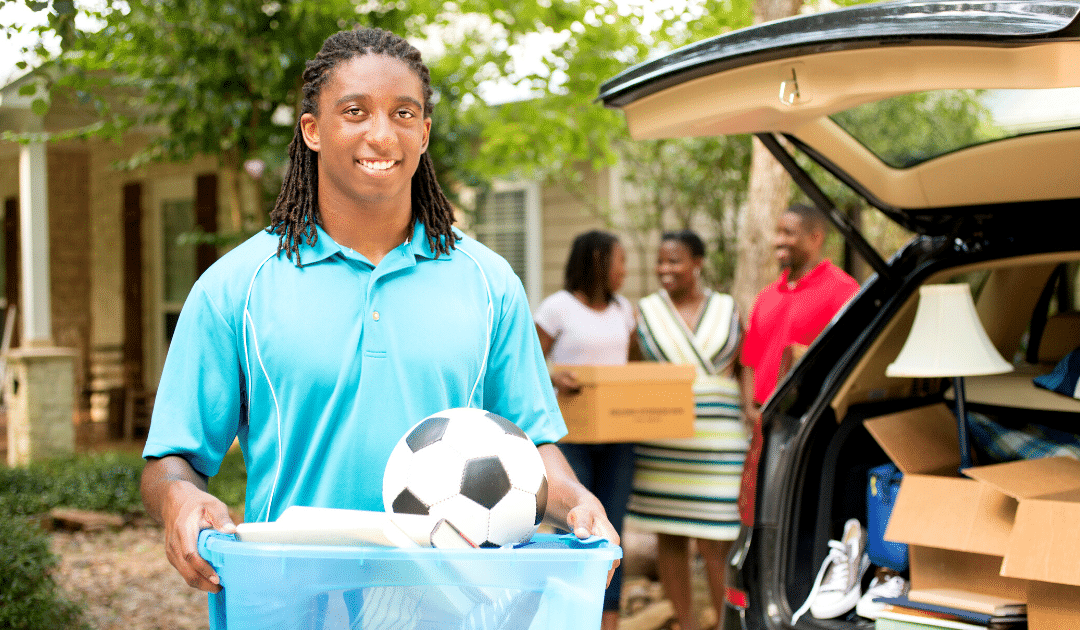
by California Casualty | Auto Insurance Info, Homeowners Insurance Info |
Your student is headed to college out-of-state – or across the state. It’s a milestone, and you’re helping them set up all of the necessary items associated with that big move, furniture, textbooks, food, cleaning supplies, etc.
In the midst of all of your preparation, don’t forget one of the most important items – insurance. Whether they stay on your policy or decide to get one of their own, you want to make sure your son or daughter is fully covered in terms of car and home/renters insurance.
Auto Insurance
Here are some common auto insurance questions for parents of college students.
My student won’t have a car away at school; do I still need to keep them insured?
Some students drive thousands of miles away so they can have their car with them, but others would rather keep their cars at home, and opt for flying in and using public transportation when they arrive. To avoid overcrowding, some schools even set limits on who can have cars on campus.
If your son or daughter will not have a car at college, you should still keep your student on your auto policy. This will avoid a lapse in coverage, and he/she may need to drive in an emergency and also will be coming home for breaks. (If your child has a car that will be kept at home and not driven while he/she is at school, ask your insurance company whether you qualify for a discounted rate.)
Do I need to change my insurance coverage to the state where the college is located?
Since college is not considered a permanent address, your student can keep his state driver’s license and the car may be registered and insured in your home state. However, you will want to check the insurance requirements where your student is attending college—and make sure that your state’s policy meets their minimum standards in the event of an accident. Either way, make sure that you notify the insurance company that the car will be kept in a different state so that they may update their records.
Should my student get his/her own auto policy?
As long as your son or daughter is still living with you, and you own the car he/she is driving, there is no need to get them their own car insurance, unless you would like to. There also is no specific age where you have to make that transition. A common time to switch to their own policy is when young adults move from the family home to their own first apartment.
If your student is living off-campus, and maintaining that address year-round, you may consider a separate auto policy.
Are there any discounts that we qualify for?
Your student may qualify for a good student driver discount, available from many insurance companies with proof of grades. Ask your insurance agent for other discounts that may be available.
Don’t forget! If your student is enrolled in school full time, was a resident of your household before moving out to attend school, and is a relative 24 years or younger or 21 or younger and in your care, your California Casualty homeowner’s policy offers the personal property protection they need as well.
Whether your child stays in a dorm on campus or resides in a leased residence off-campus, 10% of your homeowner’s personal property coverage (coverage c) extends to their possessions while they are away. If you believe they need more than that 10% coverage – for expensive musical instruments or computer equipment – then consider adding a scheduled personal property endorsement to your policy. With computers, tablets, smartphones, gaming systems, furniture and clothes, you would be spending thousands of dollars to replace your student’s possessions without this layer of protection.
You can’t be with them at college, but you can still protect them—with the right insurance.
This article is furnished by California Casualty, providing auto and home insurance to educators, law enforcement officers, firefighters, and nurses. Get a quote at 1.866.704.8614 or www.calcas.com.
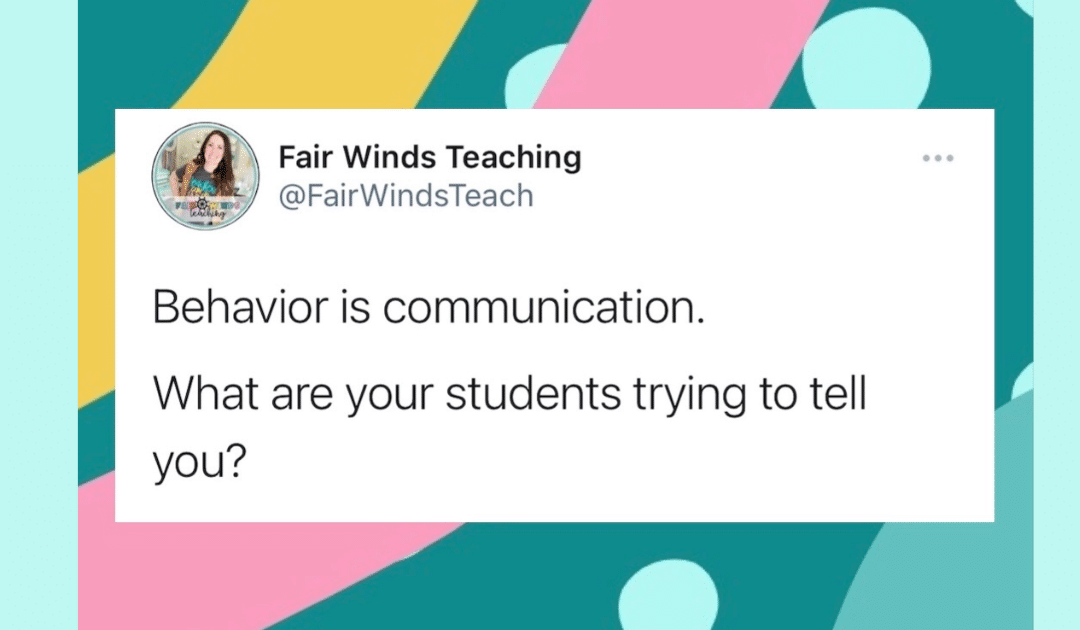
by California Casualty | Educators |
Written by Casey Keyser, MSEA Third Grade Teacher
The teacher world loves to have new “buzz words” as the educational pendulum swings from side to side. I know that a lot of people have heard the term social and emotional learning and/or SEL in the last couple of years. But this is not a new concept, it’s just now becoming more of a widely known term.
Thankfully, this has made educators, administrators, families, and the community more aware of the need our students have to be more mentally fit when it comes to learning about emotions and how to deal with social situations.
When you starting as a new teacher or if you are new to teaching SEL, remember that building relationships in the classroom are key! You must first teach a child they are loved before they can be ready to learn everything else. If a child knows they belong, they will be more receptive to learning academics, social skills, emotional regulation and everything you teach them.
What is something you do to build relationships with your students? The beginning of school is right around the corner, some closer than others, so this is a great time to start building classroom community and those connections with your students and families!
Before your students even step foot into your classroom, you have an opportunity to set up a warm and welcoming space for your students to learn in. The classroom environment is a great way to let your students know they belong in your classroom and it’s important they have the tools needed to help identify their emotions and how to regulate them when situations arise. I love these emotions posters from @creativeschooldaze are a great resource to hang up around your room and to use in a calming/peace corner.
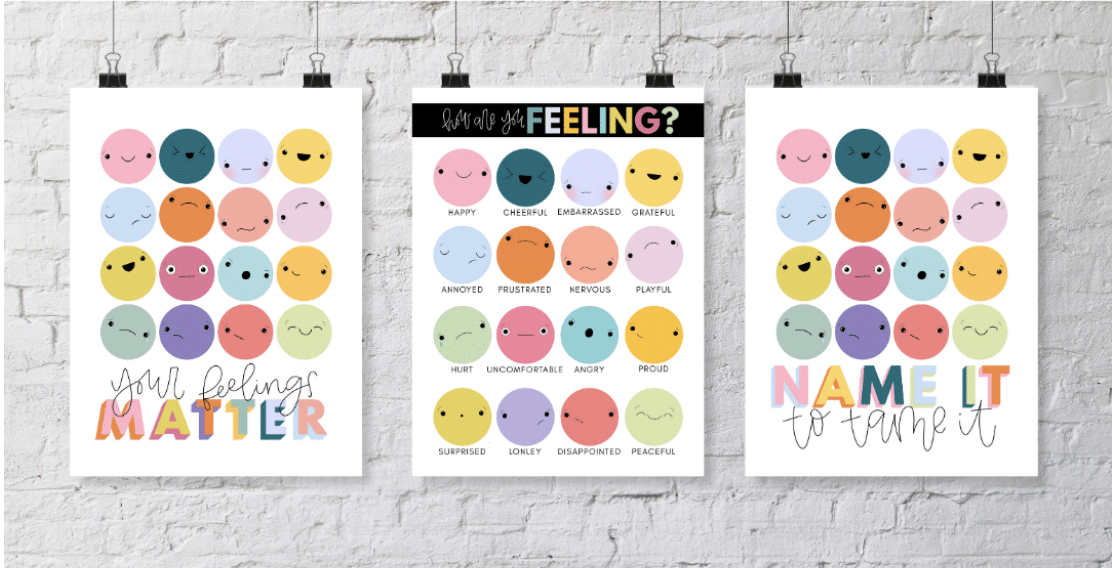
When a student does show their emotions in school, it’s very important to be able to recognize and celebrate them (even the difficult emotions). We all have them and it’s important to teach them that every emotion is okay to have, but it is the way you react to those emotions that really matter.
It is vital for all teachers to know that a child’s behavior is a form of communication. They might not have the vocabulary yet to express how they are feeling and a child may sometimes use unwanted behaviors to show you because they don’t know any other way. Behavior is communication. What are your students trying to tell you that you might be missing?
Make sure you are never asking a child at that moment, “What’s wrong?” Instead tell them, “I can see that you are upset and I want you to know that I am here for you when you are ready to talk.” This is the perfect time to ask them if they would like to visit the calming corner in your classroom.
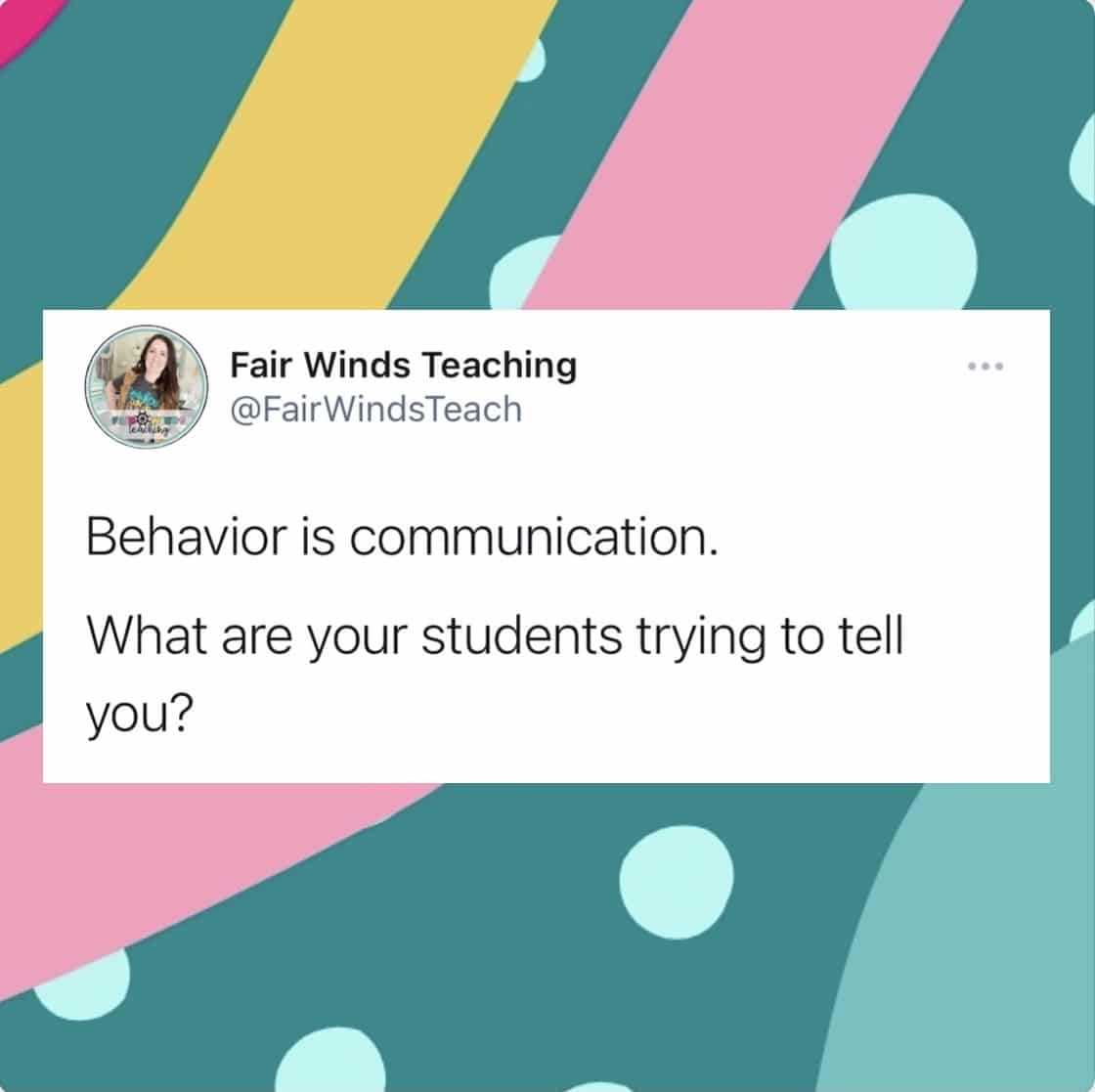
Ways to promote a safe and welcoming classroom
Check-in with each and EVERY one of your students every day. Use their name. Greeting them when they walk through the door is a positive way to start off their school day. I like to have a “Morning Greeting” poster with each of my students to use during the morning meeting. They simply choose the greeting they would like as we walk around in a class circle and say, “Good Morning, __(name)___!” Here are some of the options I give:
-
- High five
- Secret Handshake
- Chicken Wing
- Dance move
- Fist bump
- Smile
- Wave
- Hug
Next up, I like to start my day with a restorative circle or morning meeting. The games or activities that I enjoy doing best to start the day off right are things that will wake up my student’s brains and get them talking with each other to build those relationships.
A must-have in every classroom is a place a student can go if they need a minute to be with their thoughts or time to process an emotion. This is NOT a timeout area. This is not somewhere you send kids if they aren’t displaying appropriate school behavior, this space should be a respected space in the classroom that is available when a child needs it.
Setting up a Calming Corner is easy and fun to create. Pick a spot around your classroom that has a little nook or space that is safe. I use it under my countertop, it is private up still open for me to be able to see the student. I found a couple of pillows and a soft blanket to lay on the ground. I bought a lap desk to hold all of the materials a student can use for their time there. Lastly, I place our breathing strategies and emotions posters on the wall next to the corner. This way they can refer to them while visiting the area. I will list the items I put in my calming center and you can find a longer list of links here as well.
-
- Lap desk
- Pillows
- Calming ocean scene posters
- Blanket
- Fidgets
- Calming timer light
- 5-minute sand timer
- Digital timer
- Playdoh
- Bubbles
- Coloring books & crayons
- Sensory bin items (sandpaper, fabric, cotton balls, etc.)
- Legos
- Squishy plush toys
- Seguin sliders
- Calming music on an old iPod & headphones
- Lava lamp bottles for shaking up and watching
I also make student bags to send home with each child so they can set up a corner in their own bedroom or home. I call it the “On the Go: Peaceful Practices” It is a little bag full of the same type of items. This year I am sending home a coloring book, crayons, playdoh minis, bubbles and a bubble breathing poster to hang on their wall. The students really love setting up their own spot in their houses and come back to school the next day and tell me all about it. I want them to use the same practices we use here in their real-life settings as well. If you would like this FREEBIE printable of the Peaceful Practice gift bag sign and one bubble breathing poster, check it out here. Be on the lookout for the Peaceful Practice Bundle coming soon!
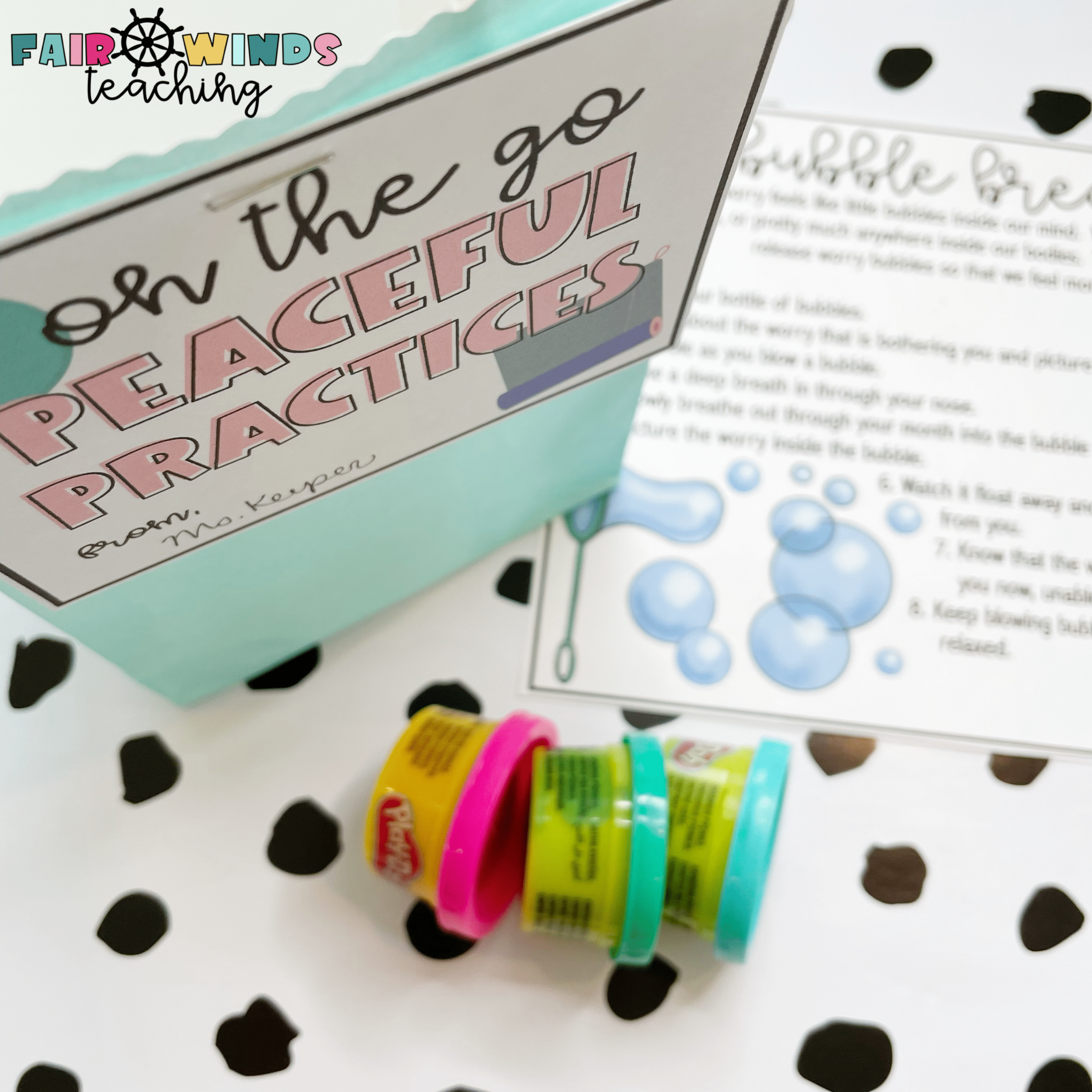
Another great FREE resource to use is printing your own Zen doodling sheets for students to do when they need a moment to themselves or after they finish their classroom or an assessment.
Always remember… the best thing you can do for your student is to show up for them each and every day.
Lastly, I always want to share with you the love I have for books. I read my class a read-aloud each day of the school year and a lot of time I introduce SEL books. Here are eight of my favorites and you can find them on these linked lists!
Great Eight SEL Books to check out!
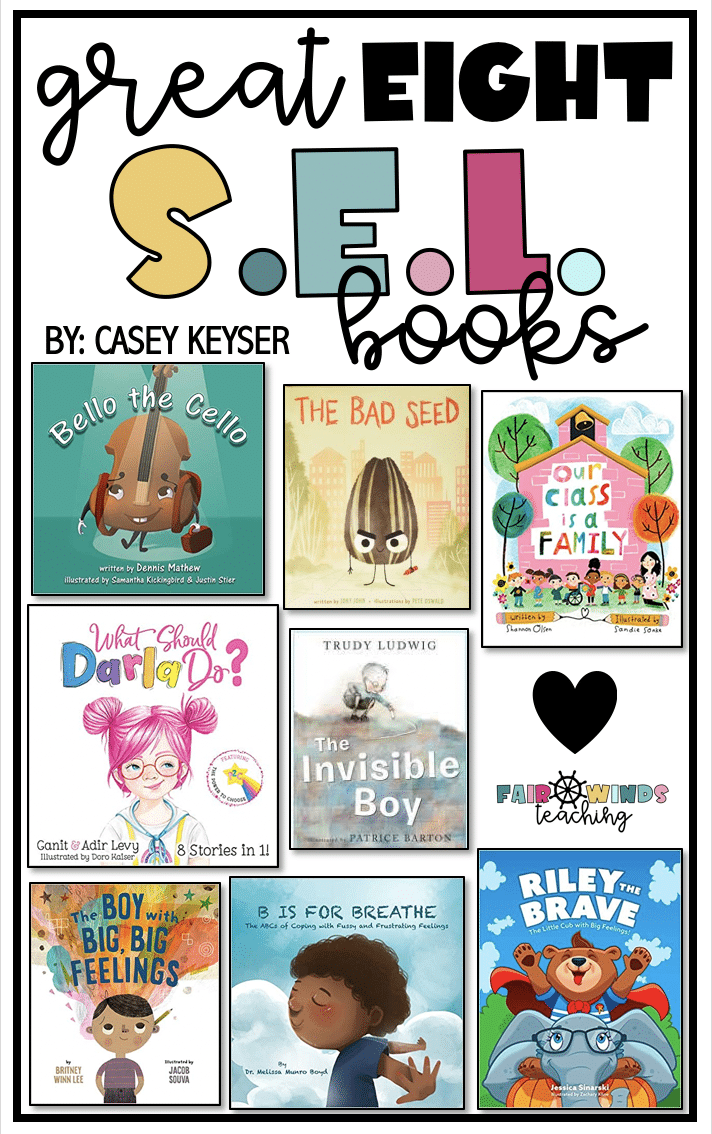
Bello the Cello By: Dennis Matthew
The Bad Seed By: Jory John
Our Class is a Family By: Shannon Olsen
What Should Darla Do? By: Adir Levy and Ganit Levy – These amazing authors also shared this amazing FREE resource with me to share with you all! Check it out here!
The Invisible Boy By: Trudy Ludwig
The Boy with the Big Big Feelings By: Britney Winn Lee
B is for Breathe By: Melissa Munro Boyd
Riley the Brave By: Jessica Sinarski

Casey Keyser is a third-grade teacher at Butterfly Ridge Elementary in Frederick County, Maryland. She was recently recognized as the national winner of the NEA Foundation’s 2021 Teaching in Excellence Award. Casey is the proud owner of the Education Resource Blog, Fair Winds Teaching, and loves to connect with her education community through her TeacherPayTeacher’s business.
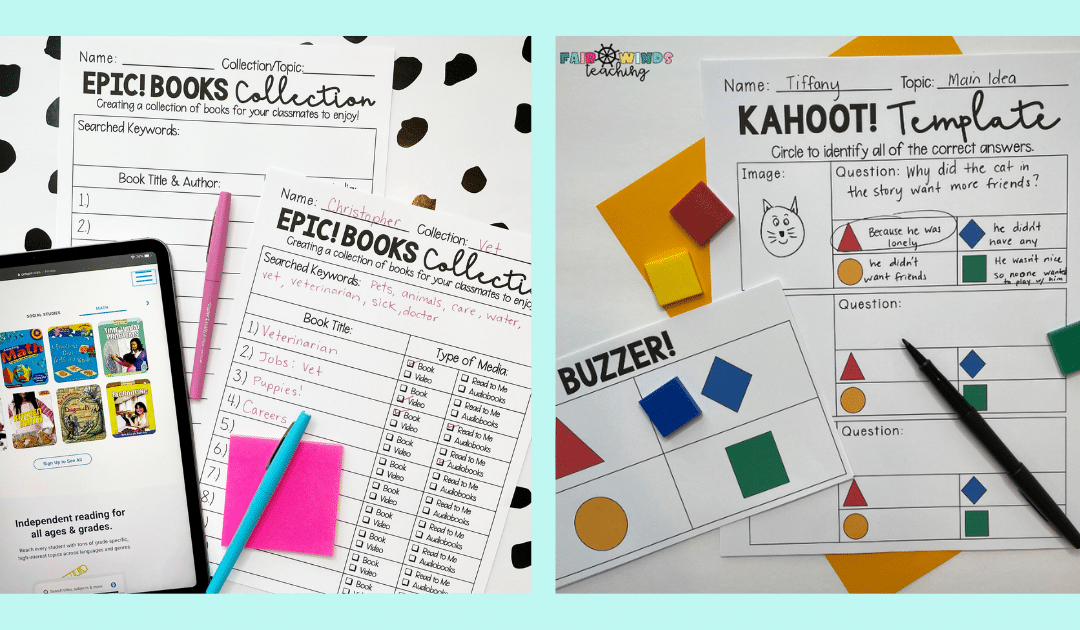
by California Casualty | Educators |
Written by Casey Keyser, MSEA Third Grade Teacher
Let’s chat about technology! Integrating technology into the classroom is my passion. It is an amazing way to engage your students in the content and to complete activities you wouldn’t have the means to do otherwise.
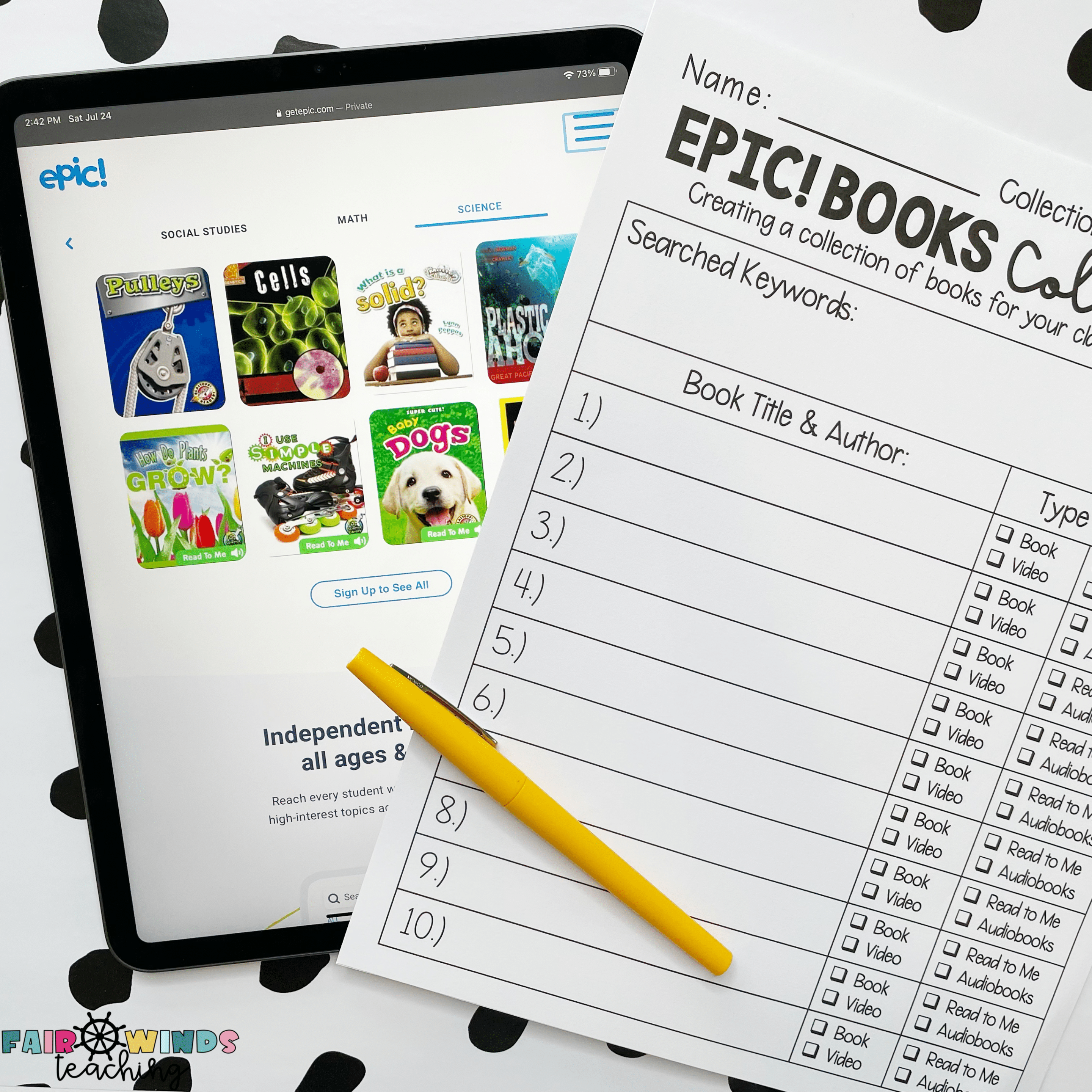
My first pro-tip about tech in the classroom is this… DO NOT use technology just for the sake of using technology.. I will also never advocate for technology to be used 24/7. Technology needs to be purposeful and planned to help build the lesson up, not be the center of the lesson. Well, unless you are teaching a lesson on how to use a search engine on the Internet (which by the way, needs to be explicitly taught.) If the lesson you are planning is better served with a paper/pencil, journal, or hands-on manipulatives… do that instead.
If you are not familiar with the SAMR model, please take a moment to check it out here.
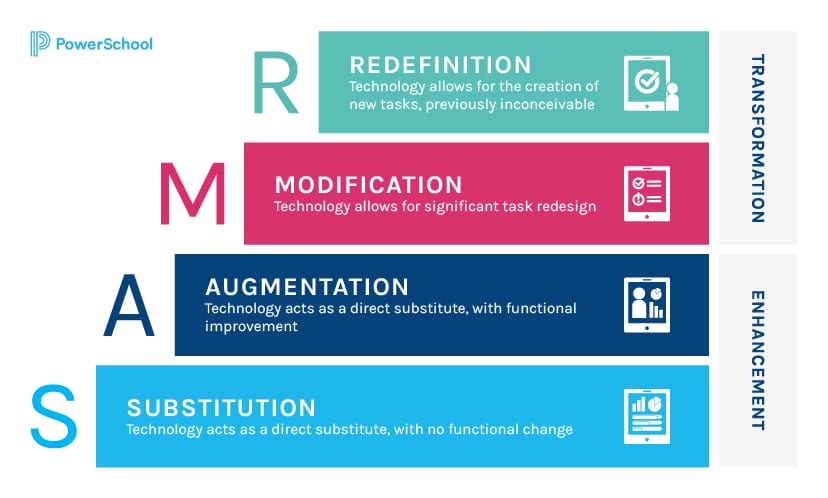
Now let’s dive into some technology uses for classrooms. I have a few favorite categories I like to use technology for. These are not content or grade-level specific so they can be used for any topic. We’re going to chat about integrating music, video, reading, and assessments tech tools into your classroom. If you use these categories when you are planning lessons, chances are, you will fill your classroom with engagement and excitement.
First up… Music technology.
Let’s talk about the amazing website Flocabulary. This incredible company creates educational hip-hop songs, videos, and additional educational materials to use in the class. They have topics anywhere from Reading and Science to Social and Emotional Learning (SEL). You can find songs to teach topics in all grade levels Pre-K to 12. They are so fun and engaging to learn with your students in a whole group setting or assigned to them individually. You are able to have a FREE 45-day trial of Flocabulary the first time you sign up, it is totally worth the try!
If you, your school, or your district subscribes to Flocabulary, I highly encourage you to check out this Flocabulary Accountability playlist. This template is used when students complete a Flocabulary Playlist online. You can either print one for students to use or have a PDF option for Kami or Google Slides online. This allows students to have a paper/note-taking option to build their planning skills. As a teacher, it also makes grading their assignment a lot easier because I can see their work while they work through the lessons. Integrating music into any content is a great way to help students remember what they are learning and become creative enough to write their own lyrics.
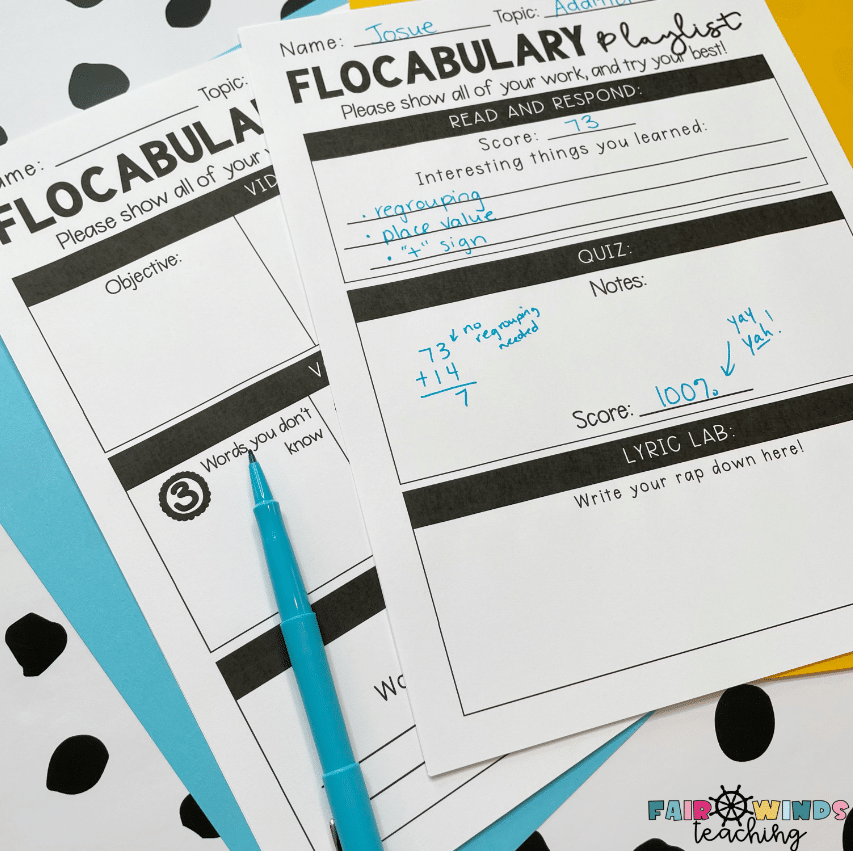
Next up… Video technology.
My student’s favorite tech tool is Flipgrid. This tool is a simple, free, and accessible video discussion experience for learners and families. You can start a discussion and engage students and their community with one click of a green plus sign. Your students get to add personalized touches by adding a selfie cover photo and stickers to help support the topic. To learn more about Flipgrid check out this super helpful Getting Started video.
I never let my students go live on Flipgrid unless they have planned out their script beforehand. I use these quick and easy templates to help them get organized and started. Grab these easy-to-print Flipgrid Video Templates here.
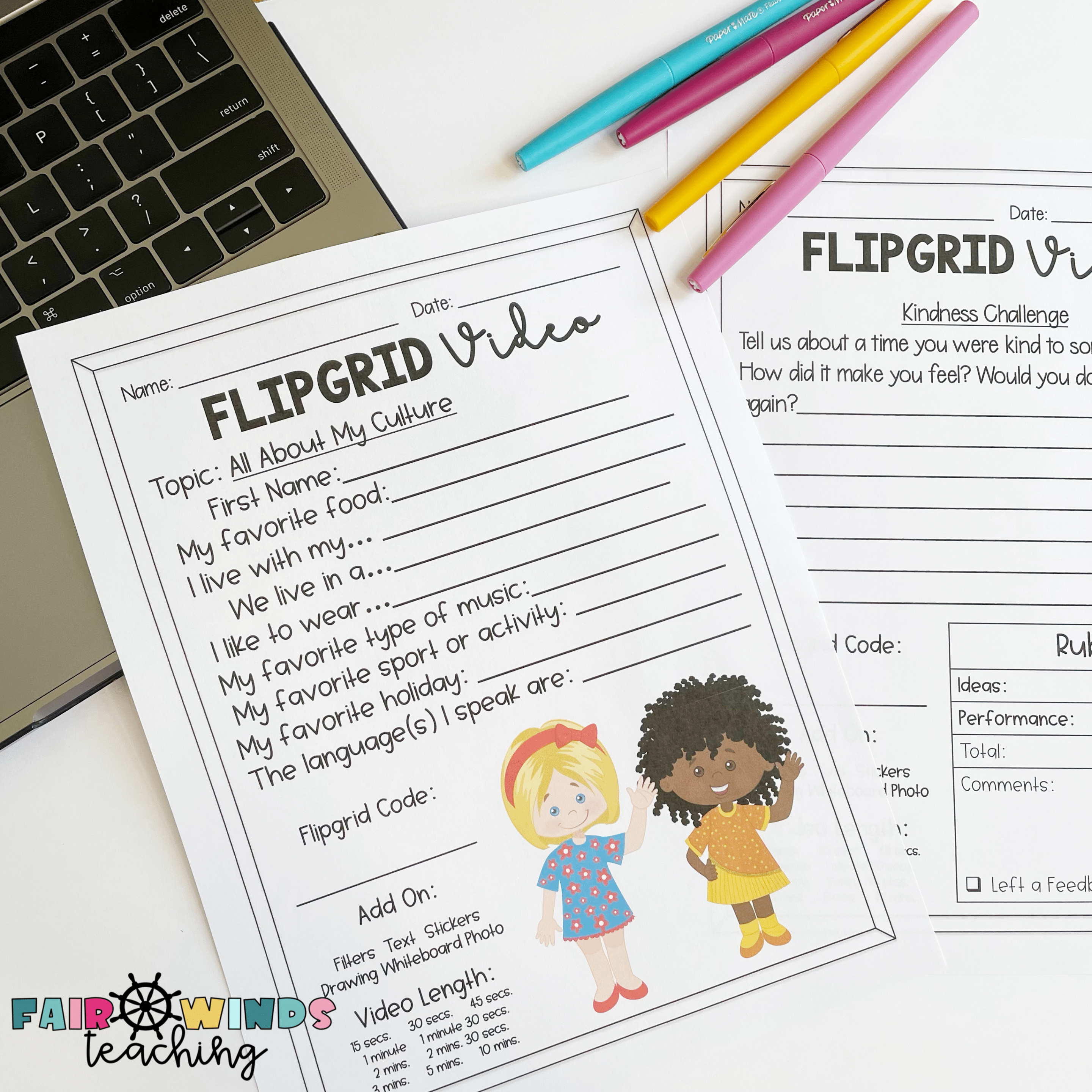
Another classroom pro tech tip, is to never let students use a new piece of technology for academic purposes first. They will not be engaged in learning the intended content or feel successful in learning how to use the new tech tool. Instead, ALWAYS onboard your students by having a fun intro activity to the tech tool/website. For example, have the students complete a building community activity such as Two Truths, One Lie using Flipgrid first. That way, they become familiar with the tool and not necessarily on the content at hand. This also allows the other students to watch their classmates’ videos and respond. All the practice is learning how to use the tech tool so that when it comes to your next lesson, they are ready!
Third in the queue… Reading!
When I want to add a reading component in my technology rotation, I look to the Book website to help provide my students with book collections curated for them on any topic. You can add books, audiobooks, video,s and read-aloud books to a collection and assign them to your students. I also want my students to be able to create their own collections of books. First, I have them create collections of hobbies and favorites to share with their classmates, and then I have them create book collections on topics we are currently researching. I use my Epic! books collection sheet to have them write down all the books they find on a topic.
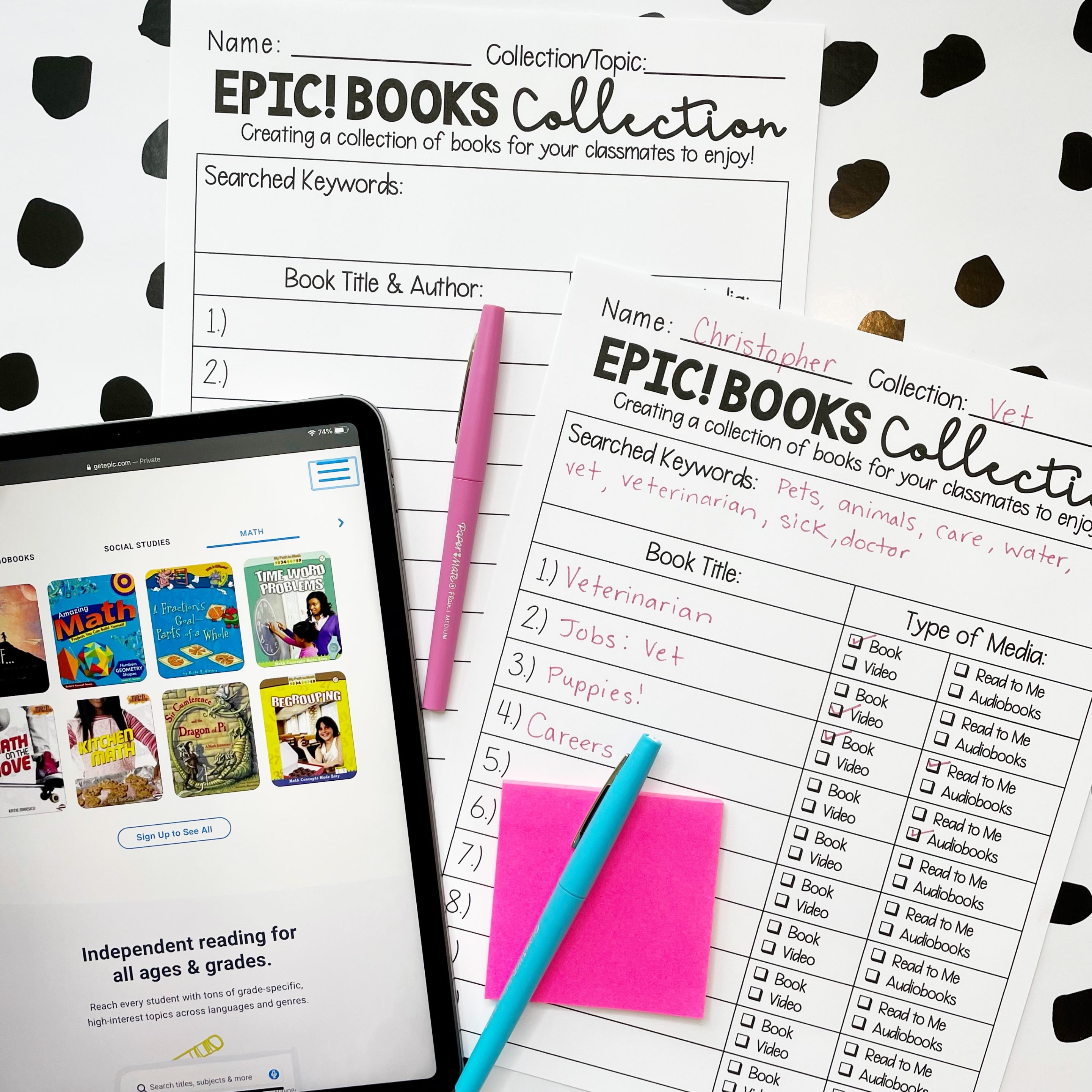
Using keywords and search tools are just a few essential skills students should learn about researching. Not to mention, Epic! books can help foster a love for reading and exposing them to all types of genres.
On to Assessments… yay!
There are so many amazing assessment tools out there, but I wanted to give examples of both high and low tech.
My new favorite tech tool is called Factile; this website has a free and paid version. As a teacher that NEVER pays for ANY tech tool, I love being able to have up to 5 teams for free. Here is a little trick to have your entire class be able to all play at the same time.
Split your class into 5 groups and assign a team leader to be the reporter of answers. Give every student a piece of blank paper and an invisible ink pen. I get the ones that have the black light on the top of the cap and I buy online in bulk and they last forever. Then the entire class writes down their answers to the assessment questions as we go and only the reporter turns in the answer. This way students can’t see each other’s answers and won’t be embarrassed to try each question. Pro tech in the classroom tip, you can use this trick with most of the online assessment tools.

Last but not least… a classic,
I know that most teachers have already heard of Kahoot!, however, I have been able to add a little spin on it. I am always looking for ways to give my students more control over their own learning, so why not have them create the Kahoot!?.
I have my students use this template (paper and digital option) to write their own Kahoot! Assessment questions for any topic. They have used this template for Science, two-step word problems, main idea comprehension questions, phonics and so much more. The sky is the limit with what they can create.
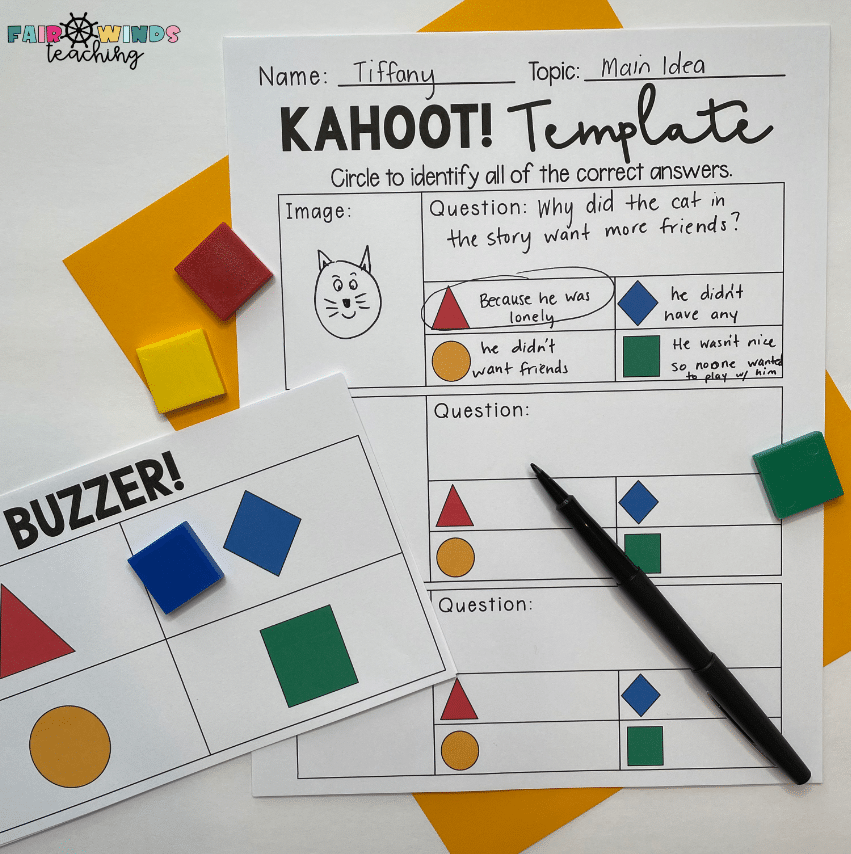
I also use my low-tech printable Kahoot! buzzers to allow the class to play on days we don’t have access to our devices. You can start an online assessment as a whole class on one teacher projector and have them tap their fingers on their decks to answer each question. I walk around the room with a clipboard to tally up an idea of the student’s understanding. You can find that Kahoot! Template and buzzer here!
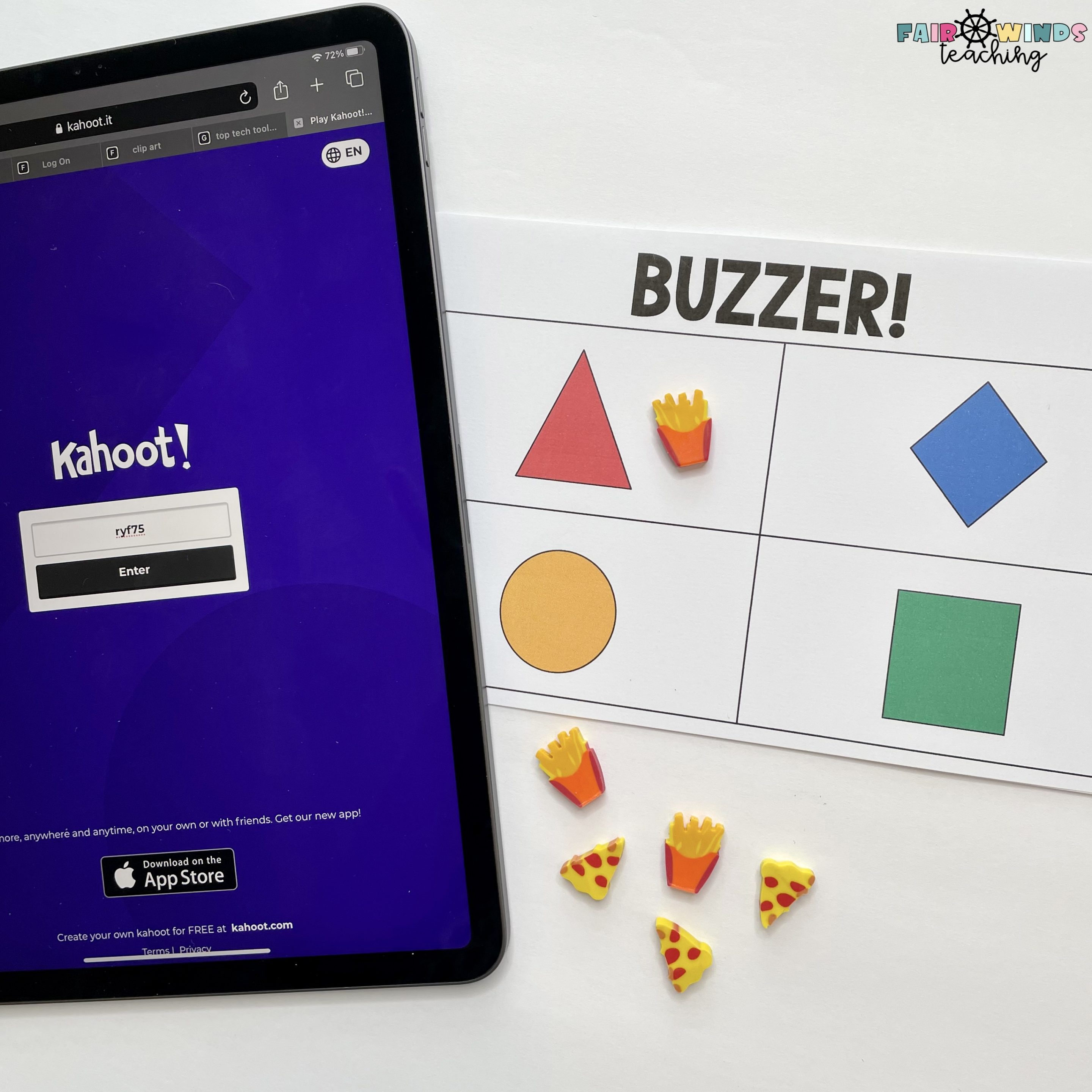
Don’t let barriers, like thinking ‘I’m not a “techy” person’ or ‘my school doesn’t have the technology available’, block you from trying a new tech tool in your classroom. I challenge you to try one new tech tool the first month of school. Let your students (and yourself) explore the tech tool first in a fun way, then dive right in with your content. You got this!

Casey Keyser is a third-grade teacher at Butterfly Ridge Elementary in Frederick County, Maryland. She was recently recognized as the national winner of the NEA Foundation’s 2021 Teaching in Excellence Award. Casey is the proud owner of the Education Resource Blog, Fair Winds Teaching, and loves to connect with her education community through her TeacherPayTeacher’s business.

by California Casualty | Educators, Health |
It may be hard to believe, but it’s time to think about school. Pretty soon, you’ll be taking those first-day pictures and sending your kids off for another year.
Here’s how to make the transition to your fall routine a painless one and ease your kids into a nice back-to-school routine.
Adjust your child’s bedtime.
Maybe you let your kids stay up a little later in the summer, and sleep in a little bit, too. (We did, too.) But it’s an easy fix to get them back on track.
-
- Start by moving summer bedtime 15 minutes earlier each night. Keep that up until you’re back to your child’s school bedtime.
- Not sure how to calculate the right time to go to sleep—especially if your child is pushing back at an earlier bedtime? Ideally, you want your child to get 9-10 hours of sleep, or at minimum 8, so set the school bedtime accordingly.
- A bedtime routine, such as bath time and reading can help. So can having the whole family unplug before bedtime. Choose a spot where everyone can charge their devices overnight to manage your child’s screentime.
Pro tip: Buy your child an alarm clock. Have him/her set alarms for bedtime warnings and for morning wakeups. That way, it’s the clock, and not mommy or daddy, alerting him or her that it’s bedtime. An alarm clock has the added bonus of reducing dependence on a cell phone as an alarm.
Organize your child’s closets.
You have a growing child. Chances are, his or her fall wardrobe from last year doesn’t fit anymore. The end of summer is a great time to clean out your child’s closet. A clean and organized closet will help your child more easily pick out clothes as part of his or her school routine.
-
- Have your child help you by sorting clothes that fit and don’t fit. Donate the ones your child has outgrown.
- Make a list of the clothes that need to be replaced.
- Organize the remainder of the closet to ensure easy access to shoes, clothes, and accessories. Clear out any items that don’t need to be kept there.
Go back-to-school shopping.
Once school starts again, schedules will become busy and it may be hard to find time to hang out together. Use back-to-school shopping as a special bonding time with each child.
-
- Schedule shopping trips sooner rather than later or you could be caught up in last-minute, pressure-filled moments rather than enjoyable ones.
- Shop for school clothes and supplies. Let your child choose his or her favorites, within your budget.
- Follow up the shopping trip with a nice lunch or special treat like ice cream. Use the time to chat with your child about his/her thoughts on the new school year.
- Make this a yearly tradition and you and your child will look forward to it for years to come.
Create a homework space.
Get your child thinking about school responsibilities by setting up a homework station. An inviting homework space might just entice your child to do his or her homework without nagging. (By the way, this is a good place for them to complete their summer reading if they haven’t done it.)
-
- Find a place in your home without distractions. Ensure that it has good light and comfortable seating.
- Equip it with the materials your child will need, such as pencils, pencil sharpeners, erasers, and paper.
- Make sure no clutter makes its way to the homework station. It should remain well-organized with just the tools needed.
- Set up clear expectations for homework. Reward a job well done.
Set a morning routine.
School mornings don’t have to be a stressful rush. With thoughtful pre-planning, you and your family can keep them under control.
-
- Think back to last year’s routine, and make any changes that would help create a calmer, happier morning. Consider new age-appropriate responsibilities as children mature.
- Make a morning list of responsibilities for each child. Provide simple easy-to-follow steps and discuss them with your child. Print them, laminate them and post them.
- Rehearse the new routine, with lots of praise and encouragement. Adjust as necessary.
Plan school lunches and snacks.
This is your chance to get healthier and more creative with your child’s school lunches and after-school snacks. Involving him or her in the process will make your child more likely to eat it, too.
-
- Research healthy lunch and snack ideas with your child. Write down ones that you both like.
- Consider creative packaging such as bento boxes.
- Create a snack station in your pantry and fridge where kids can grab granola bars or snacks, bags of fruit or veggies to add to their lunch or snack on when they get home.
Do a test run.
Chances are that your child is nervous about the new school year. It’s only normal. Try a practice day to get him or her more comfortable.
-
- Practice walking the route to school, especially if it’s new.
- Visit the school and take a tour. Find your child’s classroom, the bathroom, lunch room, etc. (Make sure to call ahead and arrange this visit with the school. You may even get to meet the teacher.)
- Let your child play in the school playground.
- Set up a playdate with future classmates.
Do something fun to celebrate the end of summer.
Finally, it’s the end of summer. Plan something fun to commemorate it. This can be an annual tradition each year before school starts.
- Plan a family beach day or favorite summer outing such as the zoo or amusement park.
- Plan an end-of-summer get-together with friends. Host a barbecue and make s’mores.
- Host an ice cream sundae celebration.
- Let your child choose a favorite summer activity to close out the season.
Your kids are only young once. Enjoy every moment!
This article is furnished by California Casualty, providing auto and home insurance to educators, law enforcement officers, firefighters, and nurses. Get a quote at 1.866.704.8614 or www.calcas.com.
























